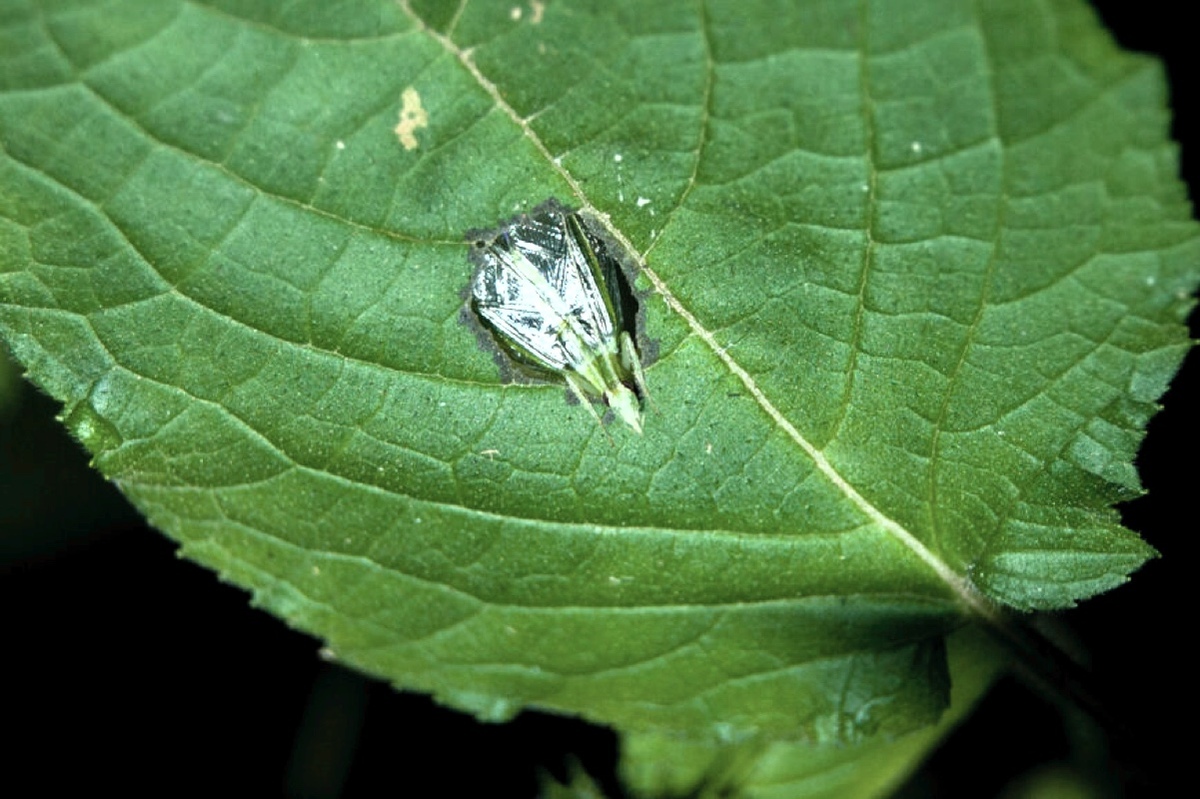Small Crickets Amplify Their Sounds With Savvy Engineering
by Cara Giaimo
8/16/2024
To our ears, a chirping cricket is a peaceful addition to an otherwise quiet night. But the cricket himself isn’t going for laid-back. He wants to be seductive, debonair, & loud. That way females will hear, come over, &—to quote a human song going for a similar vibe—pour some sugar on him.
This is harder for some crickets than others, especially those that happen to be smaller than their peers. But the littlest members of some tree cricket species have hit on a solution: They use leaves to make amplifiers that help them sound much louder & bigger than they are, filling the woods with their songs & successfully impressing their potential mates.
Crickets sing by rubbing their front wings together, scraping the hard edge of one wing against the serrated ribs of the other as though they’re playing the cello. But when their wings are too small, the sound waves they produce quickly overlap in the air & cancel each other out, a phenomenon called acoustic short-circuiting. Tree crickets, whose wings are about the size of your pinkie nail, are particularly prone to this problem.
When a small-statured tree cricket wants to turn up, he finds an appropriate leaf & chews a pear-shaped hole just a bit bigger than he is, right in the center. Then he sticks his head & front legs through the hole, holds the edges of his wings against the leaf, & starts sawing away. The leaf effectively makes his wings bigger, further separating the sound waves & letting them cascade across the forest—& into the ears of females—before they have the chance to short-circuit.
Through this feat of engineering, tree crickets can sing 2 or even 3 times as loudly as they would otherwise. Researchers have found that only the smallest & quietest crickets within a species tend to make leaf speakers—& that it works: Females hear an amplified cricket’s way more often, & stay longer, than they would if he were playing an unplugged set.
Range: India & South Africa
Species: Oecanthus henryi, Oecanthus burmeisteri, & several other tree crickets from the genus Oecanthus
How to see them: Listen for a suspiciously loud cricket—& look for a telltale hole in a leaf.



:max_bytes(150000):strip_icc()/animalmemes13-5ae22896c6733500367c4fe2.jpg)

No comments:
Post a Comment